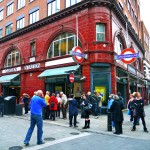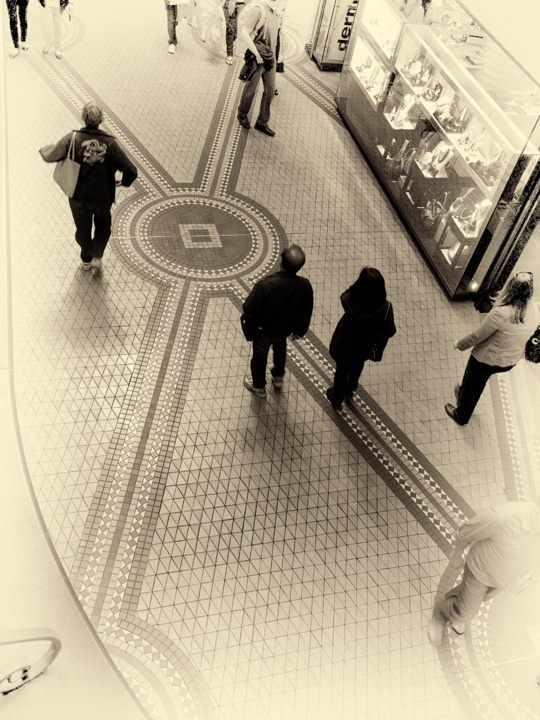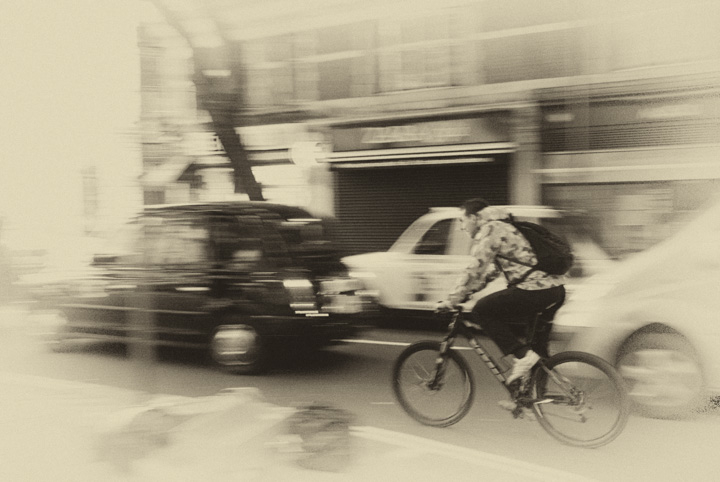Take away context clues, and cities become more interesting matrices–with blank cells to complete–where each of us personalizes how space meets time. A uniform filter applied to multiple urban scenes can easily warp time and location, and obscure–yet somehow enhance–the reality of place. This simple premise informs our point of view about city life. For every image, topic or discipline, our values and belief systems inform what we see, especially when familiar guideposts get filtered away. Remove color, crop, leave only hint and nuance, and the city can become an off-trail place where inquiry is a form of intellectual rescue and rediscovery.
In the ten examples below, five questions set the tone for this rediscovery process:
- Is it apparent when the photo occurred?
- Is the location clear? If so, is such clarity based on personal familiarity with the location?
- Is the context of the scene readily understandable? What more would be needed to offer a more complete answer to questions of when and where?
- Which element of urban life seems the most important to the composition (e.g. safety, environment, mode of transportation, role of public space, public/private interface)?
- What questions remain?
The answers are for each of us to develop and consider, but one message stands out. Take apart the most fundamental things we see everyday. Inquire, and on the rebound, literally and figuratively, each of us will see things in a whole new light.
An interesting footnote: I captured all photos above between 2010 and 2014, on four different continents. During test runs on Facebook, several people commented that most of the photos looked dated, and many did not believe that I was the photographer, nor Lightroom the robber of color. Perhaps ironically, the city featured the most (Seattle), is barely 160 years old. The second-to-last photo (Jerusalem) belies simultaneous claims of place dating back thousands of years. Yet the antique filter creates equal partners in the rediscovery process. The other photos show, inter alia, how a shopping gallery floor (Sydney) still projects a historic building’s nineteenth century pattern, how London streets and former Lisbon fairgrounds are both fair game for blended bicycle traffic, and how a classic older car (Minneapolis) can cast a retro-era feel on an entire intersection.
Images composed by the author in London, Jerusalem, Lisbon, Minneapolis, Seattle and Sydney. Click on the image for more detail. © 2009-2014 myurbanist. All Rights Reserved. Do not copy.
For more information on the role of personal experience in understanding the changing city, see Urbanism Without Effort, an e-book from Island Press.











